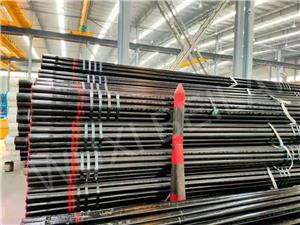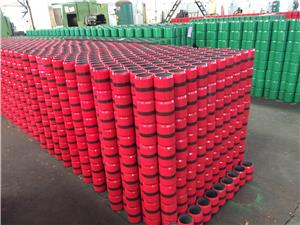The three phases of a wellbore are as follows: drilling, casing and tubing
Oil and gas production is a complex, time-consuming and costly process, with each wellbore having to go through three distinct phases: drilling, casing and tubing. Today, Bei Lai will offer a concise summary of these three steps.
Step 1: Drilling with drill pipe
The initial phase of drilling each shaft involves the use of drill pipe, a robust steel tube that conveys force to the drill bit. Typically, during horizontal drilling, the drill pipe preceding the bit is often a non-magnetic drill collar. The drill pipe's rotation propels the bit, which carves through the rock until it arrives at the intended target location within the deposit. Concurrently, drilling mud serves to cool the bit and transport the cuttings—essentially, the fragmented rock—back to the surface.
Step 2, casing liner
The outer tubing serves as the casing, offering a protective liner for the wellbore. This crucial function safeguards the soil layer and groundwater from potential contamination by drilling mud and/or fracking fluids. Additionally, the casing plays a pivotal role in stabilizing the wellbore. Consequently, the casing material selected must be capable of enduring extraordinarily high pressures. The processes of drilling and casing are executed in an alternating sequence. At predetermined intervals, as dictated by industry standards, the drill pipe is extracted. Subsequently, the casing is installed and secured in place with cement within the wellbore, allowing the drilling operation to resume.
Step 3: Production with tubing
Tubing facilitates the conveyance of oil and gas from the depths of the well to the surface, constituting the third phase of the wellbore operation. Although oil and gas can sometimes ascend to the surface naturally, the majority of cases necessitate the employment of pumps to elevate the fluids. This conduit may be either casing or tubing; those with an outer diameter smaller than 114.3 mm (4 1/2 inches) are classified as tubing, whereas those exceeding 114.3 mm (4 1/2 inches) in outer diameter are termed casing.
The size of the casing decreases from the wellhead to the bottom of the well as the depth increases, so that there are several types of casing, depending on the purpose and diameter. There is a gradual transition from vertical to horizontal wellbore casing due to the fact that horizontal drilling techniques allow for more accurate mining of deposits. Eventually, the drill pipe is removed and the production casing is inserted into the well bore and cemented in place, then the well is fractured and tubing is installed in the production casing.
The three critical phases of drilling, casing, and tubing ensure the wellbore operates effectively. Should you require further details on casing and tubing, please do not hesitate to reach out to us!




